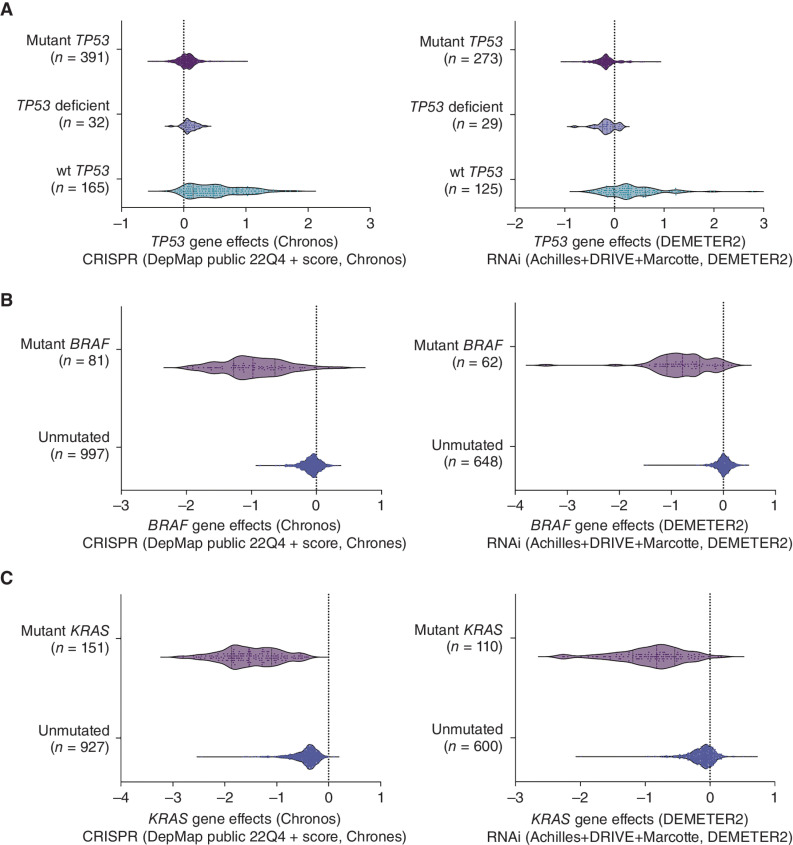Figure 7.
Analysis of the DepMap database does not identify mutant TP53 as a cancer cell dependency. A, Analysis of the DepMap database shows that the deletion of mutant TP53 using CRISPR had no impact on the growth of 391 human cancer cell lines encompassing 158 different TP53 mutations. RNAi-mediated removal of mutant TP53 impaired the growth of not only a small number of cancer cell lines expressing mutant TP53 but also of some cancer cell lines that are TP53 deficient, demonstrating the off-target effects of RNAi. Removal of wt TP53 by either CRISPR or RNAi led to a growth advantage in many cancer cell lines expressing wt TP53. B, Mining of the DepMap database shows that the in vitro growth of human cancer cell lines expressing mutant BRAF is impaired when mutant BRAF is removed by using CRISPR/Cas9 or RNAi technology. C, Mining of the DepMap database shows that the in vitro growth of human cancer cell lines expressing mutant RAS is impaired when mutant RAS is removed by using CRISPR/Cas9 or RNAi technology.

